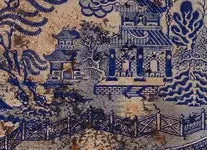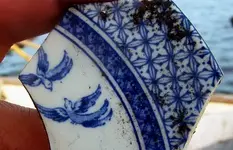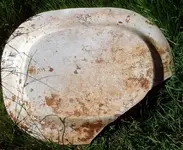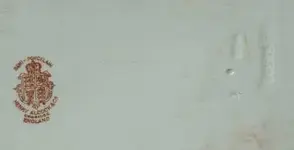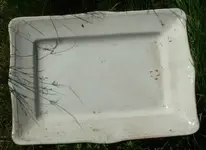You are using an out of date browser. It may not display this or other websites correctly.
You should upgrade or use an alternative browser.
You should upgrade or use an alternative browser.
chinese plater
- Thread starter hmmm
- Start date
mojjax
Silver Member
Here's one on Ebay -
http://cgi.ebay.com/OLD-RARE-ESTATE...ryZ45503QQssPageNameZWDVWQQrdZ1QQcmdZViewItem
http://cgi.ebay.com/OLD-RARE-ESTATE...ryZ45503QQssPageNameZWDVWQQrdZ1QQcmdZViewItem
As an eBay Associate we earn from qualifying purchases.
Upvote
0
dg39
Bronze Member
- Joined
- Mar 30, 2006
- Messages
- 1,869
- Reaction score
- 46
- Golden Thread
- 0
- Location
- Deep in the swamps of Louisiana..
- Detector(s) used
- Ace 250--White's 6000 DI Pro
- Primary Interest:
- All Treasure Hunting
Check the mark on bottom. That tells the story. You can pinpoint aprox. age also.
DG
DG
Upvote
0
dg39
Bronze Member
- Joined
- Mar 30, 2006
- Messages
- 1,869
- Reaction score
- 46
- Golden Thread
- 0
- Location
- Deep in the swamps of Louisiana..
- Detector(s) used
- Ace 250--White's 6000 DI Pro
- Primary Interest:
- All Treasure Hunting
Tricia said:Condition is everything with this type of item so take a few $ off for the cracks.
Truthfully, it has no practical value at all, in its condition. But it would display nicely and the chipped section can be glued. We probably can help you with the history though by the requests I made in the above post before this one.
DG

Upvote
0
Gypsy Heart
Gold Member
The willow pattern, as we know it today, was designed by one Thomas Minton about 1780, and brought from him by Thomas Turner, a famous potter and manager of Shropshire pottery.
Here is the story:
Knoon-shee, a lovely Chinese maiden, whose affections were bestowed upon her father's secretary, Chang, but who was commanded by her parents to wed a wealthy rival suitor.
She refused to comply with their wishes, whereupon her enraged father locked her up in the little house just visible on the left of the temple. From here she contrived to send a message to her lover, 'Gather thy blossom, ere it be stolen.' Thus encouraged, Chang succeeded in entering the apple orchard and carrying off his beloved. So we see them hurrying over the bridge. Knoon-shee with a distaff, and Chang carrying her box of jewels, while the angry father follows hard after them armed with a whip - in some patterns also accompanied by the discarded lover.
The couple made good their escape in the 'Chinese ship sailing by' and landed on the island, which can be seen on the left of the picture, where they took refuge in the little wooden house. But the father and discarded suitor tracked them and set fire to the house while they were sleeping; and so the lovers perished.
Next morning, from the ashes rose their spirits, in the forms of two doves. And so we see them with out-stretched wings flying off to the realms of eternal happiness.
http://www.spode.co.uk/history/history_pattern.html
Here is the story:
Knoon-shee, a lovely Chinese maiden, whose affections were bestowed upon her father's secretary, Chang, but who was commanded by her parents to wed a wealthy rival suitor.
She refused to comply with their wishes, whereupon her enraged father locked her up in the little house just visible on the left of the temple. From here she contrived to send a message to her lover, 'Gather thy blossom, ere it be stolen.' Thus encouraged, Chang succeeded in entering the apple orchard and carrying off his beloved. So we see them hurrying over the bridge. Knoon-shee with a distaff, and Chang carrying her box of jewels, while the angry father follows hard after them armed with a whip - in some patterns also accompanied by the discarded lover.
The couple made good their escape in the 'Chinese ship sailing by' and landed on the island, which can be seen on the left of the picture, where they took refuge in the little wooden house. But the father and discarded suitor tracked them and set fire to the house while they were sleeping; and so the lovers perished.
Next morning, from the ashes rose their spirits, in the forms of two doves. And so we see them with out-stretched wings flying off to the realms of eternal happiness.
http://www.spode.co.uk/history/history_pattern.html
Upvote
0
BioProfessor
Silver Member
- Joined
- Apr 6, 2007
- Messages
- 2,917
- Reaction score
- 84
- Golden Thread
- 0
- Location
- Mankato, MN
- Detector(s) used
- Minelab e-Trac, White E-Series DFX
At least there are no guys with forked sticks playing in the water on there. Right? Man I hope I'm right. 
Daryl

Daryl
Upvote
0
Monty
Gold Member
- Joined
- Jan 26, 2005
- Messages
- 10,746
- Reaction score
- 167
- Golden Thread
- 0
- Location
- Sand Springs, OK
- Detector(s) used
- ACE 250, Garrett
- Primary Interest:
- All Treasure Hunting
When I was a youngster back in the 1950s my Mom got a set of these from Safeway Super Market. They gave pieces away with the purchase of so many dollars worth of groceries. Mom had the whole set and I think my sister now has them? I'm sure these were copy of a pattern from China. May have been made in Japan but I don't know as I never looked at the back of them. Monty
Upvote
0
gods country girl
Full Member
- Joined
- May 18, 2007
- Messages
- 213
- Reaction score
- 12
- Golden Thread
- 0
- Detector(s) used
- whites mxt
- Primary Interest:
- All Treasure Hunting
It is a Nanking or Nanking style platter.Due to the amount of crazing on your platter it looks to be very old.Where did you find it? You may find what you are looking for by googling antique Chinese porcelain nanking.
Upvote
0
hmmm
Hero Member
- Joined
- Jun 9, 2007
- Messages
- 830
- Reaction score
- 98
- Golden Thread
- 0
- Primary Interest:
- All Treasure Hunting
- #16
Thread Owner
I found out its 1830 english made.
www.antiqueshunting.com
www.antiqueshunting.com
Upvote
0
Similar threads
- Replies
- 0
- Views
- 237
- Replies
- 5
- Views
- 295
- Replies
- 1
- Views
- 213
Users who are viewing this thread
Total: 1 (members: 0, guests: 1)




